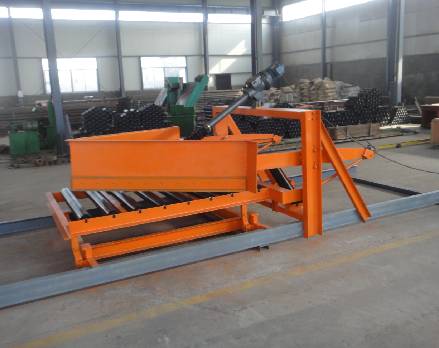 Afrikaans
Afrikaans  Albanian
Albanian  Amharic
Amharic  Arabic
Arabic  Armenian
Armenian  Azerbaijani
Azerbaijani  Basque
Basque  Belarusian
Belarusian  Bengali
Bengali  Bosnian
Bosnian  Bulgarian
Bulgarian  Catalan
Catalan  Cebuano
Cebuano  Corsican
Corsican  Croatian
Croatian  Czech
Czech  Danish
Danish  Dutch
Dutch  English
English  Esperanto
Esperanto  Estonian
Estonian  Finnish
Finnish  French
French  Frisian
Frisian  Galician
Galician  Georgian
Georgian  German
German  Greek
Greek  Gujarati
Gujarati  Haitian Creole
Haitian Creole  hausa
hausa  hawaiian
hawaiian  Hebrew
Hebrew  Hindi
Hindi  Miao
Miao  Hungarian
Hungarian  Icelandic
Icelandic  igbo
igbo  Indonesian
Indonesian  irish
irish  Italian
Italian  Japanese
Japanese  Javanese
Javanese  Kannada
Kannada  kazakh
kazakh  Khmer
Khmer  Rwandese
Rwandese  Korean
Korean  Kurdish
Kurdish  Kyrgyz
Kyrgyz  Lao
Lao  Latin
Latin  Latvian
Latvian  Lithuanian
Lithuanian  Luxembourgish
Luxembourgish  Macedonian
Macedonian  Malgashi
Malgashi  Malay
Malay  Malayalam
Malayalam  Maltese
Maltese  Maori
Maori  Marathi
Marathi  Mongolian
Mongolian  Myanmar
Myanmar  Nepali
Nepali  Norwegian
Norwegian  Norwegian
Norwegian  Occitan
Occitan  Pashto
Pashto  Persian
Persian  Polish
Polish  Portuguese
Portuguese  Punjabi
Punjabi  Romanian
Romanian  Russian
Russian  Samoan
Samoan  Scottish Gaelic
Scottish Gaelic  Serbian
Serbian  Sesotho
Sesotho  Shona
Shona  Sindhi
Sindhi  Sinhala
Sinhala  Slovak
Slovak  Slovenian
Slovenian  Somali
Somali  Spanish
Spanish  Sundanese
Sundanese  Swahili
Swahili  Swedish
Swedish  Tagalog
Tagalog  Tajik
Tajik  Tamil
Tamil  Tatar
Tatar  Telugu
Telugu  Thai
Thai  Turkish
Turkish  Turkmen
Turkmen  Ukrainian
Ukrainian  Urdu
Urdu  Uighur
Uighur  Uzbek
Uzbek  Vietnamese
Vietnamese  Welsh
Welsh  Bantu
Bantu  Yiddish
Yiddish  Yoruba
Yoruba  Zulu
Zulu industrial conveyor pulleys
Industrial Conveyor Pulleys An Essential Component of Material Handling Systems
In the ever-evolving world of industrial processes, efficiency and reliability are paramount. One critical component that plays an indispensable role in enhancing operational effectiveness is the conveyor pulley. Conveyor pulleys are integral to material handling systems, serving as the driving force behind the movement of materials in various industries, including manufacturing, mining, and logistics. This article delves into the types, functions, and significance of industrial conveyor pulleys in modern industrial applications.
Understanding Conveyor Pulleys
At its core, a conveyor pulley is a cylindrical component that supports the belt of a conveyor system, allowing for the smooth transfer of materials. Pulleys are typically constructed from robust materials such as steel, to withstand heavy loads and harsh environments. They come in various shapes and sizes, including drive pulleys, return pulleys, and snub pulleys, each serving a specific function in the material handling process.
1. Drive Pulleys These are the primary pulleys that receive power from the motor and propel the conveyor belt, thereby moving the materials. They are usually located at the head of the conveyor system. Drive pulleys are designed to offer maximum friction between the belt and the pulley to ensure efficient power transfer.
2. Return Pulleys Positioned at the tail of the conveyor, return pulleys guide the belt back to the drive pulley, ensuring the continuous movement of the system. They are often equipped with bearings to manage the return path with minimal resistance.
3. Snub Pulleys These are used to increase the contact area between the belt and the drive pulley, improving traction and preventing slippage. Snub pulleys are strategically placed to enhance the efficiency of the conveyor system.
Key Functions of Conveyor Pulleys
Conveyor pulleys perform several critical functions that enhance the overall performance of material handling systems
industrial conveyor pulleys

- Support and Stabilization Pulleys provide essential support to the conveyor belt, maintaining its alignment and preventing sagging. This stabilization is crucial for ensuring the safe and efficient movement of materials.
- Power Transmission The drive pulley is responsible for transmitting power from the motor to the conveyor belt, enabling the movement of materials. The design of the pulley is essential for maximizing this power transfer.
- Load Distribution Pulleys help distribute the weight of the materials being transported, reducing stress on the belt and extending its lifespan. Properly designed pulleys minimize wear and tear, leading to lower maintenance costs and increased operational efficiency.
- Reducing Friction Enhanced designs in pulleys help to reduce friction between the belt and the surface it operates on. This aspect is vital for improving energy efficiency within the conveyor system.
The Importance of Selecting Quality Conveyor Pulleys
Choosing the right conveyor pulley is critical for optimizing the performance of material handling systems. Various factors need to be considered, including load capacity, environmental conditions, and operational speed. High-quality pulleys can enhance system efficiency, leading to increased productivity and reduced operational costs.
Maintenance plays a crucial role in prolonging the life of conveyor pulleys. Regular inspections and timely replacements of worn-out parts are essential to prevent unexpected downtimes, which can be costly for businesses.
Conclusion
In conclusion, industrial conveyor pulleys are fundamental components that significantly impact the efficiency and reliability of material handling systems. Their diverse types and functions contribute to the seamless movement of materials across various industries. As businesses strive for greater productivity and reduced operational costs, investing in high-quality conveyor pulleys and maintaining them effectively is more important than ever. Understanding the significance of these components is essential for anyone involved in industrial operations, ensuring that material handling systems operate at peak performance.
-
Revolutionizing Conveyor Reliability with Advanced Rubber Lagging PulleysNewsJul.22,2025
-
Powering Precision and Durability with Expert Manufacturers of Conveyor ComponentsNewsJul.22,2025
-
Optimizing Conveyor Systems with Advanced Conveyor AccessoriesNewsJul.22,2025
-
Maximize Conveyor Efficiency with Quality Conveyor Idler PulleysNewsJul.22,2025
-
Future-Proof Your Conveyor System with High-Performance Polyurethane RollerNewsJul.22,2025
-
Driving Efficiency Forward with Quality Idlers and RollersNewsJul.22,2025





























